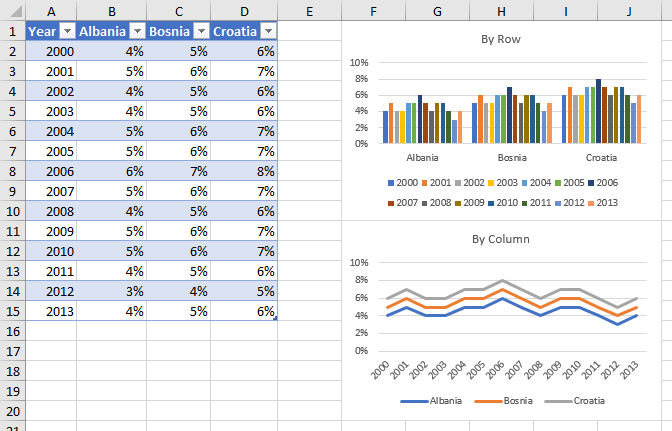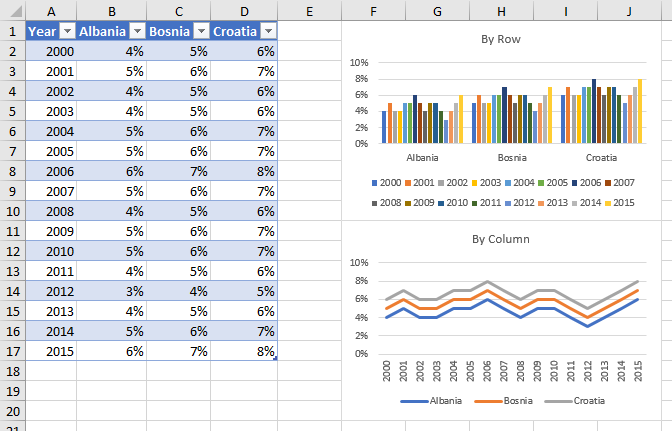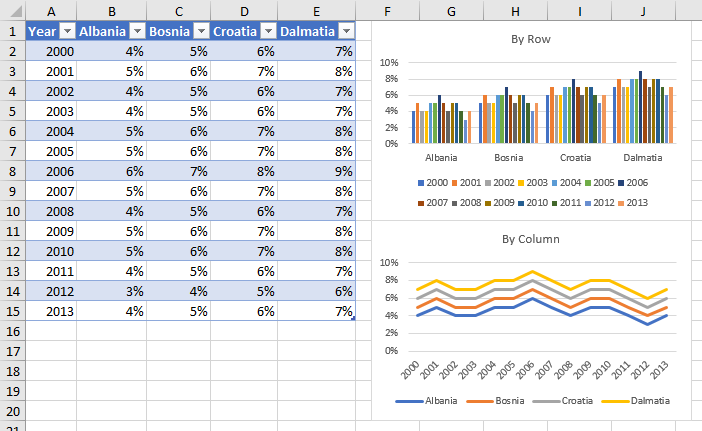Hello))
I want to create a dynamic chart to analyze the inflation rate of some countries for some years. On my range, I have the dates on the X-axis(B2:G2) and the countries on the Y-axis(A2:A5). I am making a dynamic chart that will auto-update when a new data is added to the range (I am using the combination of OFFSET and COUNTA). Everywhere I looked, there are guides on how to create a dynamic chart which will track the changes if a new column is added (a new date in H2)(I successfully did this). Now I want the dynamic chart to auto-update if a new row is added (a new country in A6).
Using the table feature to build a dynamic chart is not doing the job either. As far as I understand, the reason is, as my range takes values from another source (I am using index and match for this purpose), the table fails to auto-expand (unless I enter the data manually).
Are there any ideas how should I proceed?
I want to create a dynamic chart to analyze the inflation rate of some countries for some years. On my range, I have the dates on the X-axis(B2:G2) and the countries on the Y-axis(A2:A5). I am making a dynamic chart that will auto-update when a new data is added to the range (I am using the combination of OFFSET and COUNTA). Everywhere I looked, there are guides on how to create a dynamic chart which will track the changes if a new column is added (a new date in H2)(I successfully did this). Now I want the dynamic chart to auto-update if a new row is added (a new country in A6).
Using the table feature to build a dynamic chart is not doing the job either. As far as I understand, the reason is, as my range takes values from another source (I am using index and match for this purpose), the table fails to auto-expand (unless I enter the data manually).
Are there any ideas how should I proceed?








